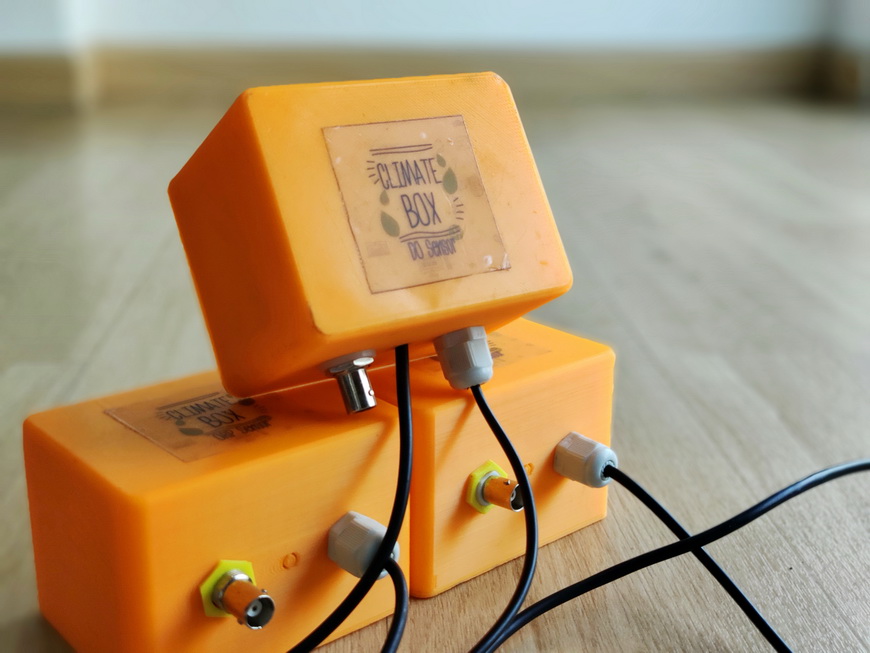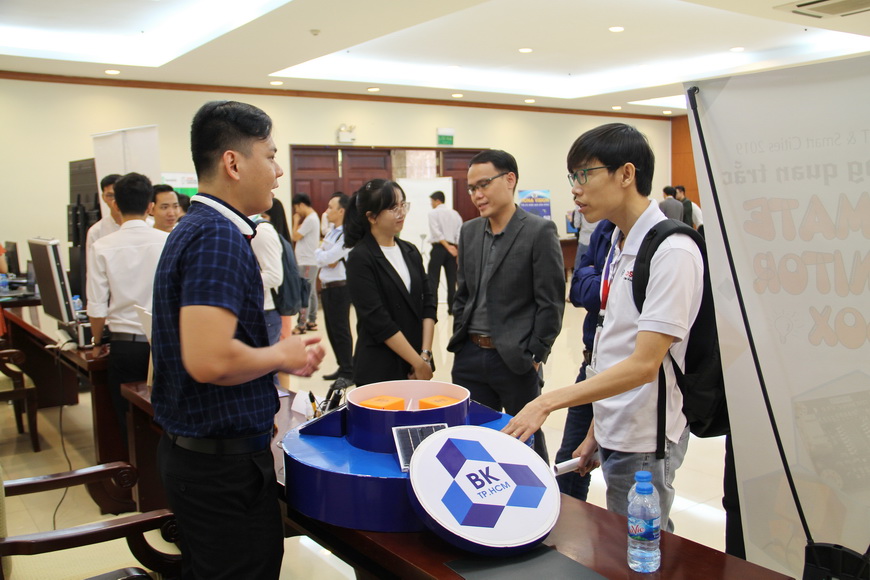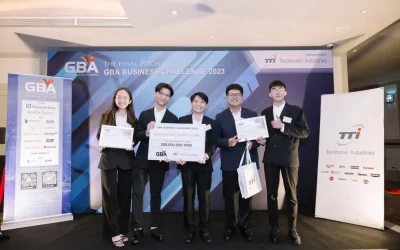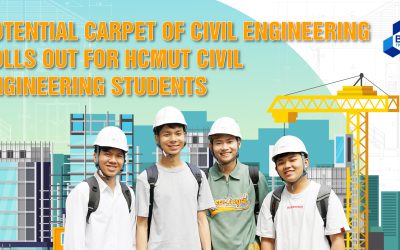BACH KHOA STUDENT CREATION: SMART ENVIRONMENTAL MONITORING DEVICE
The smart environmental monitoring device to measure water pollution level won the second prize of AloT & Smart Cities 2019 competition organized by Quang Trung Software Corporation Incubator (QTSC Incubator).
From the normal float, a student group of Computer Science – HCMUT Bach Khoa designed a smart environmental monitoring device with many sensors to measure the pollution level of water in shrimp farming.


Model of environmental monitor created by an HCMUT Bach Khoa student group was exhibited in the “Week for Ho Chi Minh City Innovation, Startup and Entrepreneurship (WHISE 2019)” which is organized by Department of Science and Technology HCMC
FROM SHRIMP FARMING ….
Pham Le Song Ngan – Intake K2016, Computer Science, a project member – described the device as having combined different sensors to track different indexes and boards to read values from the sensors. All these data are transferred back to an information station for a defined period of time, from which information is analyzed and solutions are suggested.
To protect the sensors and boards, the team created a float in which contains every necessary device. This floating-monitoring-device also combines an adapter supplied by solar panels, real-time information transferring device, nautical equipment to track the condition and position of the float via GSM or GPS.
This system’s excellent point is that the station also reads data from defined sensors, then connects all of them in the Internet environment. Previously, all stations have to carry many functions at the same time such as read all connected sensors, transferred all the above information to the main station, which leads to the fact that if one sensor breaks down, the engineer would struggle in finding the faults and solutions.
When in use, the system will be set up by tying the float on the water surface depending on the depth, characteristics of the place needed to be monitored. Currently, the system is now in the application in shrimp farming to record data such as pH level, oxygen level so as to give in time warning to the farmers via smartphone.

A closer look at the environmental monitoring device
The system is also capable of connecting other devices on the farm to create a smart agricultural ecosystem, for instance, it automatically starts the oxygen supplier when the device detects and analyzes that the oxygen level in the farm is lower than standard.
“This technology promises to create a smart agricultural management system in the future” – said Song Ngan.
Ngan’s partner in the project, Bui Quang Tien – a former student of intake K2010 in Computer Science – also informed us that, the device is an open system as it is not limited in the shrimp farming area or water environment. If the user needs different indexes for other fields, only the sensors and mechanical coverage design are needed to be changed accordingly.
For example, the system can be applied for animal farming such as industrial chickens, it will monitor the temperature or dust concentration in the coop. If the weather is too cold, the system will give warnings or signals to help control the air conditioner, or in case the dust concentration is high, it can turn on the air filter.
… TO THE BIG SEA
Being the one who designed the product, Quang Tien shared that in order to have that system, they had to go through 3 stages including mechanical design, electrical board design, and mobile application design. To Tien, the electrical board is the most difficult and time-consuming as it took a long time to re-check and maintain the best accuracy.
According to Dr. Le Trong Nhan – lecturer at Computer Science, HCMUT Bach Khoa, the system that Ngan and Tien suggested based on the newest AIoT technology (Artificial Intelligence of Things) of Microsoft, on the side of information collecting board using Android Things operating system of Google.
“The monitoring device can be considered as the overall system, depending on the real application to adjust accordingly.” – said Dr. Nhan.
Dr. Nhan also shared with us that he and his research team are now in the progress of a collaborative project with the University of Technology Sydney (Australia), which is about constructing a floating environmental monitoring device with its diameter of 3 meters (as recorded in Vinh Xuan Dai (Phu Yen) – one of the largest shrimp farm in Vietnam).
The monitoring system is inspired by Ngan and Tien’s project, however, it is much more complicated, it requires correct and careful calculations in many factors, especially weather and the capability of transferring information through the sea.
“Our group and the students, together with Australian partners, had carried out the very first step in research. This is a challenge however if we succeed, it is obviously a great leverage of a student’s product.” – said Dr. Nhan.
Read more: Student Creation: Textile wastewater treatment by nanomaterials
The AIoT trend
Dr. Le Trong Nhan announced that AIoT technology is encouraging the creative development of many smart fields such as smart transportation, smart health care, smart home or smart cities.
The Vietnamese information technology community also quickly updates new AIoT development worldwide. However, the strength of AIoT lies in the fact that even secondary students can create similar products, although it is still amateur compared to university students, those products are still practical for using.
According to Dr. Nhan, in order for AIoT to develop effectively, the support from the experts in particular fields is vital. For example, if an information technology expert is not supported, he could not gather meaningful data, or even collect the information already, he could not have the right methods to analyze them to bring more value to manufacturing activities.
The AIoT & Smart Cities 2019 Competition organized by QTSC Incubator together with Department of Science and Technology HCMC, Vietnam Association for Information Processing, Robert Bosch Engineering and Business Solutions and Quang Trung Software Corporation. In the first year of organizing, the competition attracted 84 teams, from which the organizer chose 9 best teams.
T.U



